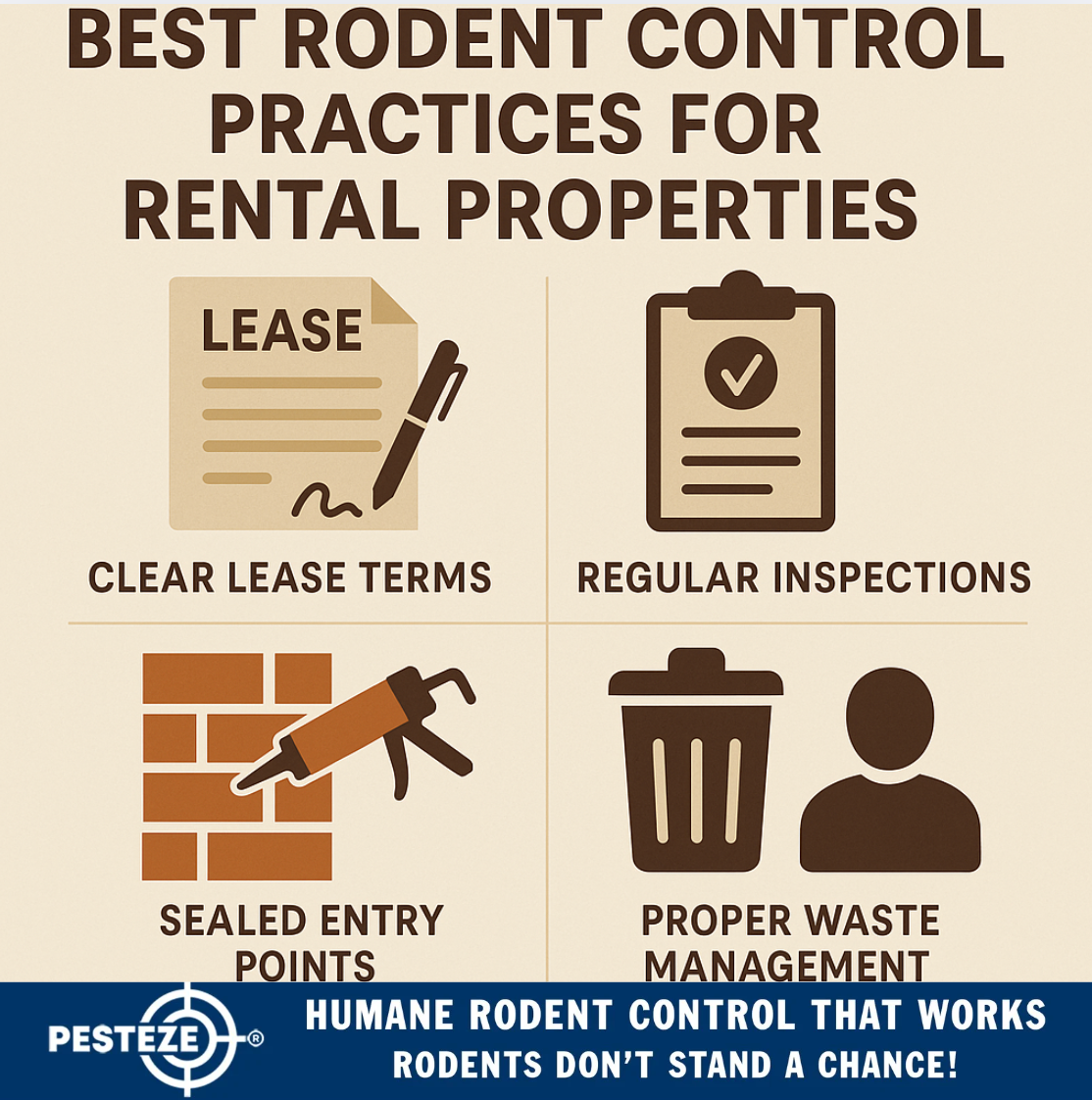BEST RODENT CONTROL PRACTICES FOR RENTAL PROPERTIES

BEST RODENT CONTROL PRACTICES FOR RENTAL PROPERTIES
SUMMARY
Rodent infestations in rental properties can lead to property damage, tenant complaints, and legal issues. Both landlords and tenants share responsibility for prevention and maintenance. Learn practical steps to keep your property rodent-free, protect investments, and maintain tenant satisfaction.
FEATURES
-
Clear Lease Terms: Define pest control responsibilities in the rental agreement.
-
Regular Inspections: Schedule routine checks for droppings, nests, and damage.
-
Sealed Entry Points: Close gaps in walls, vents, and flooring to block access.
-
Proper Waste Management: Ensure trash is stored securely and picked up regularly.
-
Tenant Education: Teach residents how to maintain cleanliness and report issues early.
-
Professional Pest Control: Partner with licensed experts for prevention and treatment.
DESCRIPTION
Rodent control in rental properties requires cooperation between landlords and tenants. Mice and rats can quickly damage insulation, wires, and structures, while their droppings pose health risks and violate housing codes. By establishing clear responsibilities and consistent maintenance routines, property owners can protect their investments and maintain a healthy environment for tenants.
The first step is clarity. Include detailed pest control terms in the lease agreement, outlining who handles prevention, reporting, and professional treatments. This avoids confusion and ensures accountability. Typically, landlords manage structural prevention, while tenants maintain cleanliness and report issues promptly.
Routine inspections are essential. Property managers should check basements, attics, and exterior walls for gnaw marks, droppings, or entry holes. Inspecting shared areas like laundry rooms, storage units, and waste zones helps identify early infestations.
Seal all entry points to prevent access. Even small cracks near utility lines, door frames, or plumbing can serve as rodent highways. Use durable materials like steel wool, caulk, or hardware mesh. Maintaining weather stripping on doors and window seals also strengthens defense.
Proper waste management is critical in multi-unit housing. Ensure dumpsters and trash bins have secure lids and are emptied regularly. Encourage tenants to avoid leaving food waste or pet food outside overnight.
Education and communication make prevention more effective. Provide tenants with simple guidelines on proper storage, cleaning routines, and what signs to watch for—such as scratching sounds, droppings, or gnawed food packaging.
Finally, establish a partnership with a professional pest control company. Regular servicing ensures preventive measures are working and reduces liability in the event of an infestation. Professional documentation also helps with compliance during property inspections or health reviews.
By combining preventive design, responsible tenants, and professional support, landlords can maintain rodent-free rental properties that promote tenant satisfaction and long-term value.
- Saharsh Bansal


Comments 0